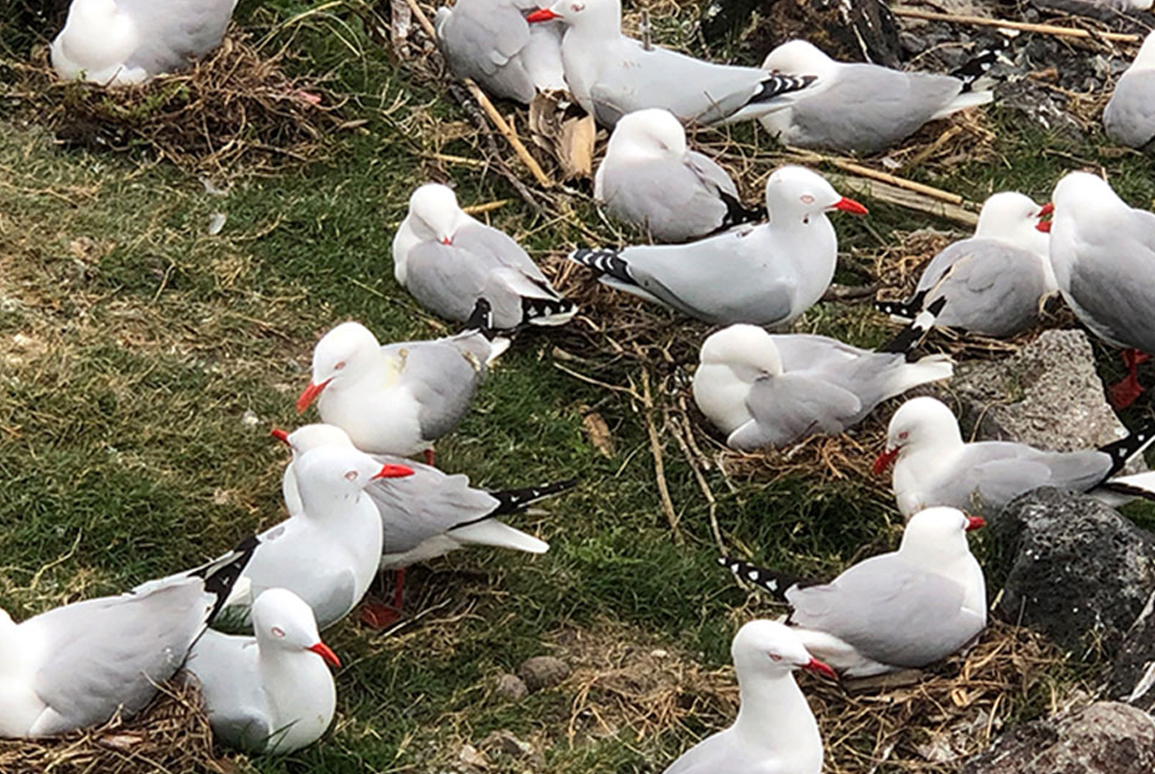3D printed seagulls – attack of the clones
4 May 2020
How do you get a flock of seagulls to move? You need to make them think that others already have.

At Risk and Seagulls: not two words often thought of in the same sentence, unless it involves the risk they pose to your fish ‘n’ chips at the beach. It might astonish many people that NZ’s red-billed gull (commonly referred to as the seagull) is classified as At Risk – Declining. This classification is not due to low numbers but rather the rapid rate of decline of the overall population, primarily due to predation by mammalian pests and decreased abundance of krill, their primary food source.
Red-billed gulls breed in dense colonies, and both adults and chicks display strong site fidelity, returning each year to the same colony from which they bred or hatched. Surprisingly, one such breeding colony was located at an old boatyard on Wynyard Point, in the CBD of Auckland. This site was proposed as the location for the new SeaLink terminal as part of the America’s Cup development (AC36). Working alongside environmental consultant Paul Kennedy, Boffa Miskell ecologists recorded approx. 600 red-billed gulls at the site, including nesting adults, chicks, and fledglings, making this one of the largest urban colonies in New Zealand.
The key question was how to avoid, remedy or mitigate the impact of the proposed AC36 development on this colony because the proposal would mean the loss of their breeding habitat. Avoiding the development of this site was not possible, so as mitigation we recommended the creation or enhancement of alternative habitat at an adjacent site. There was one crucial question: could the birds be successfully enticed to move?
The answer came in the form of a tried and tested technique with a modern twist: 3D printed decoy birds. Decoy birds have previously been used in conservation to entice native birds to particular locations for breeding; in New Zealand this has included decoy gannets and fairy terns. The results have been mixed due to numerous factors, including the inability to create life-like decoys.
The use of digital technology in conservation is nothing new, but the toolbox available to ecologists now includes tools such as drones, remote monitoring, and 3D printing. This rapid expansion of tools has allowed for creative solutions in ecological restoration and wildlife management.
To entice the red-billed gulls to move to the adjacent site, 3D printing technology was used to rapidly create incredibly realistic decoys. Auckland based designer, Shaun Lee, 3D printed eight decoy red-billed gulls. Decoys were drawn using 3D modelling software and printed using a bioplastic with each decoy taking 30 hours to print.
The proposed site was first cleared, and driftwood from the old site and gravel mounds were used to create the feeling of home. Then the eight life-like red-billed gull decoys were set in concrete across the site. The proof is in the result: at the start of the 2019/2020 breeding season, adult birds quickly joined their 3D printed companions at the site to jostle for nesting sites, and by the end of the season over 350 pairs bred and more than 500 chicks were fledged. And whilst your fish ‘n’ chips remain at risk for the foreseeable future, this outstanding result further illustrates the value of linking rapidly evolving technology and innovative thinking to achieve positive outcomes for wildlife management.
For further information please contact Dr. Lee Shapiro

